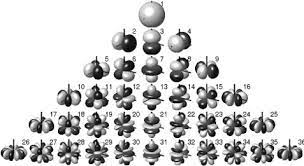How to create a format independent of the reproduction system/layout?
AMBISONICS are audio channels created on the 70’s, while trying to answer a question how to create a format independent of the reproduction system/layout. That means it doesn’t matter how many speakers you are using or how do you position them, the ambisonics would be able to adapt to it.
Ambisonics essentially use a Mid-Side technique. A Mid is replaced by omni microphone (instead of cardioid) and Side are multiplied figure of eight microphones (pointing to different sides).
Formats and orders:
The most traditional format of Ambisonics is the First Order (4 channels):
- “W” = 1 omni
- “X”, “Y”, “Z” = 3 fig of eight – each pointing towards a different direction:
Left-Right; Front-Back; Up-Down
The same result can be obtained with a tetrahedral mic with 4 capsules [LFU (left, front, up), RFD (right, front, down), LBD (left, back, down), RBU (right, back, up)]. Later on 4 signals are converted into 1 omni and 3 figure of eight channels.
Recording in ambisonics can be done in two different formats:
“A” format = the audio recorded directly from and Ambisonics microphone
“B” format = omni + 3 fig of eight (most softwares operate on this format)
It’s difficult to localise an ambisonic sound, usually we get a diffused result
The signal doesn’t arrive at all capsules at the same time and it can have some impact in some frequencies.
In order to perceive 3d sound with Ambisonics setup:
High Order Ambisonics (by adding more channels, the details of the sound image is increased) ——> the more orders (channels), the better space resolution

First Order Ambisonics (FOA) – 4 audio channels
2nd Order Ambisonics (SOA) – 5 more channels
3rd Order Ambisonics (TOA) – 7 additional channels

The are four parameters that defines Ambisonics:
1. Order (1st, 2nd…),
2. Format (A or B) – most plugins work in B format
3. Channel Ordering (FuMa ordering, ACN ordering [used nowadays]),
With the creation of High-Ordered Ambisonics it was important to create an order of channels that would scale well in more complex scenarios.
ACN ordering: W, Y, X, Z
FuMa ordering: W, X, Y, Z
4. Normalisation (N3D, SN3D [used nowadays], FuMa, MaxN)
Normalisation refers to the gain of each channel. SN3D is the most common. The first channel (omni) is always the channel with the highest level. While recording it is then easier to pay attention that only one channel is not clipping.
A commonly used flavour in Ambisonics is called AmbiX = B format + ACN + SN3D
VR Applications:
With Ambisonics it’s easy to apply rotations. That makes great for VR and 360.
Ambisonics is able to reproduce 3D audio using small amount of channels. Ambisonics mics give you more space information than stereo or mono
PROS:
– flexibility (to adapt to any speaker layout)
– reproducing a 3D audio with a small number of audio channels
– scale (to improve space resolution)
CONS:
– a high number of channels if you want a good space resolution. The 3rd order or above start to have a really good space resolution.
